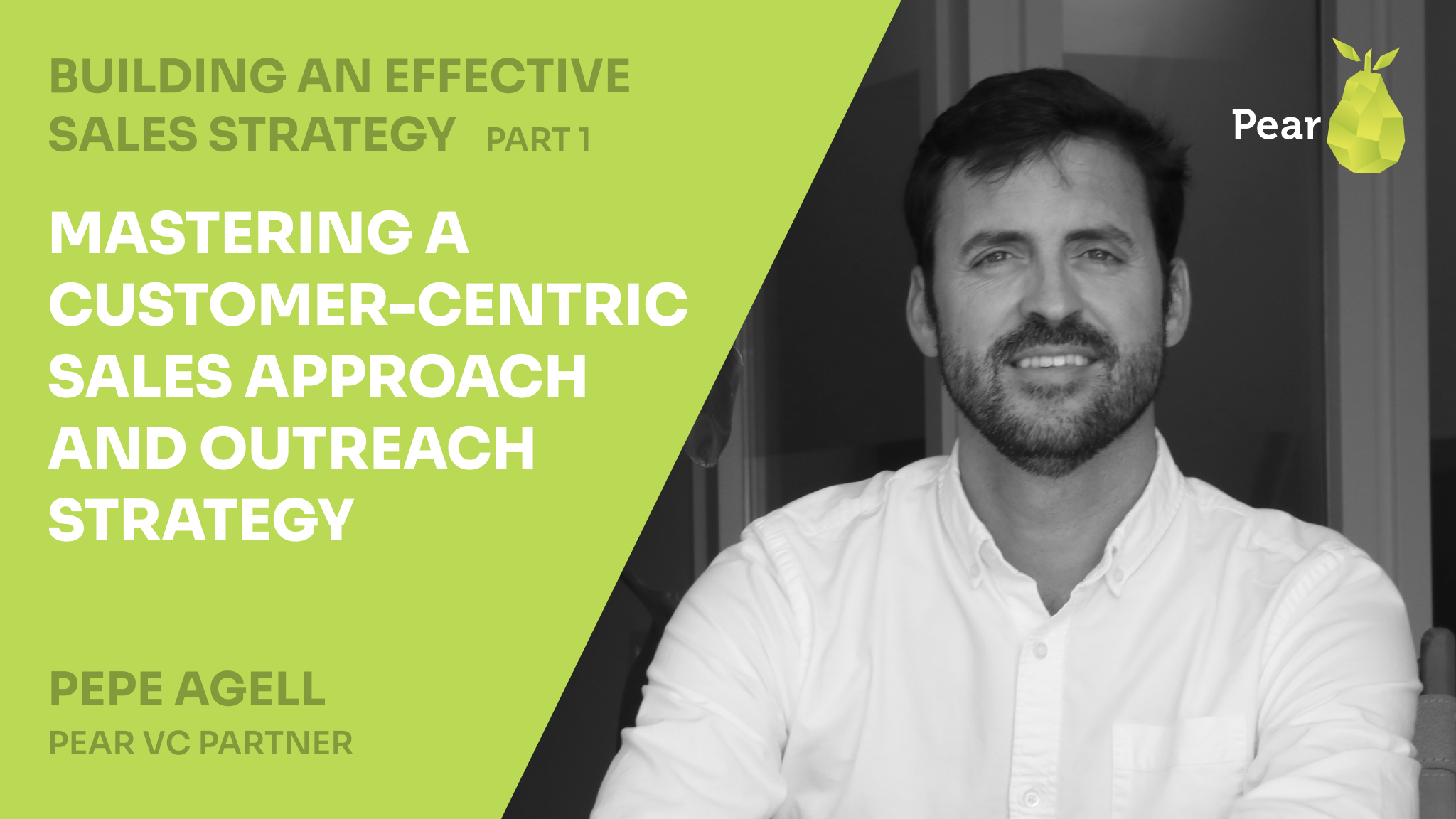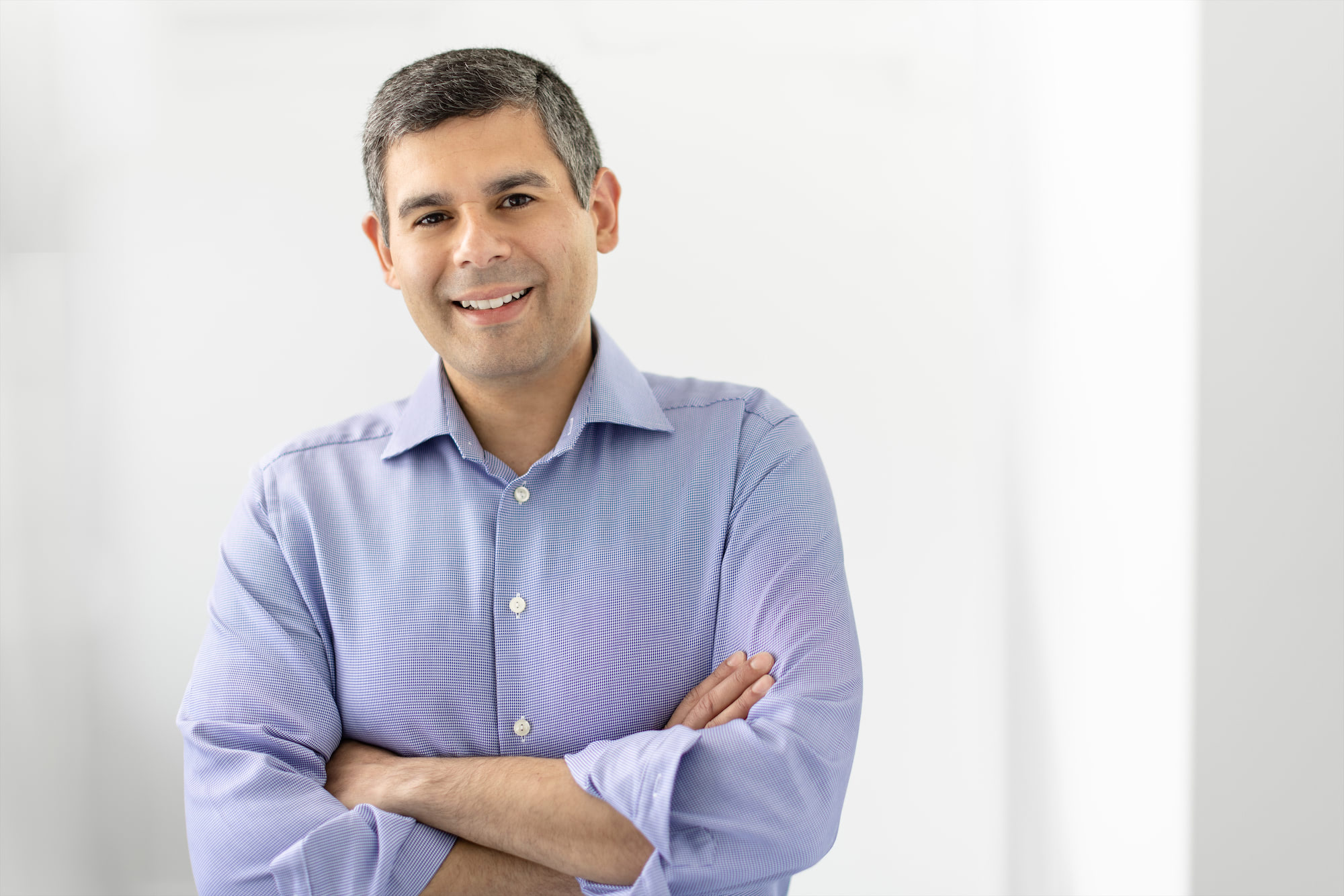Pear’s Partner, Pepe Agell, learned the importance of mastering sales during his entrepreneurial journey with Chartboost, a mobile advertising company. Pepe led Chartboost and built sales and go-to-market strategy for the company from its earliest days to its acquisition by Zynga in 2021. He is now a Partner at Pear VC, based in Barcelona and focused on Pear Europe.
One of the biggest obstacles founders face early in their journeys is building a successful sales strategy. To take your company from 0 to 1 requires putting the customer at the center of what you do and building momentum in sales and product adoption. Whether they like it or not, founders are forced to wear a salesperson hat. To make their job easier, I’m excited to share a few of the lessons I learned over my decade leading sales for Chartboost.
1. Think about the Law of 250 to remember that each and every interaction with a prospective client is critical.
Joe Girard is acknowledged as the world’s greatest salesman, and he famously coined the Law of 250, which he believed to be the radius of influence for an average person.
The basic principle is that if you do a crummy job of selling your product, you could potentially lose 250 more customers. If you do a great job, you could potentially gain 250 more customers.
You might only get one shot to make an impression, so you have to prepare yourself for each and every interaction you have with a prospective customer.
2. Remember that HOW you sell is as much of a differentiator as WHAT you sell.
Founders focus on perfecting their product and service offerings for good reason – it’s critical to success. But, in my experience, founders often don’t carve out enough time for getting to know their target customers and crafting a sales strategy that reaches the right people in the right way.
The more you know about a client, the more leverage you have. The key to learning more is to research your clients, identify what they need to achieve, understand the impact your product or service can have on their business, and then engage your clients in a meaningful way.
3. Adopt a customer-centric sales approach every step of the way: don’t simply sell your products and features, sell the impact your product will have on helping your customer’s business improve.
Try to understand what is going on inside your client’s organization: What are their objectives? What are their obstacles? What stage of the journey are your clients on?
This can be easier said than done, so I like to break down this customer-centric sales approach into 4 buckets, which I call the 4 D’s:
Discovery: research and prepare for client interactions
Diagnose: identify where the areas of opportunity exist within the client’s organization
Design: create a proposal with the pitch tailored to the solutions your client needs
Deliver: clearly share your vision and close the deal
4. We operate in a social world. Put your best foot forward online.
First impressions matter. Your clients are very likely to look up your online profiles, so make sure you are building your online presence in a professional and clear way. Consider updating your LinkedIn profile with an updated photo (professional and smiling), a tagline or title that captures what you are passionate about, and share a clear blurb about your company story and what you’re trying to achieve. Put simply, don’t make a prospective client dig for information about what you’re selling, but rather make it easy to access and understand.
Establish contact with prospective clients. Don’t connect on LinkedIn blindly, but instead, send a quick note with context to make a connection. If you have a mutual contact with a strong connection with a potential client, you can ask for an introduction. Alternatively, you could just reach out and mention the common connection without directly asking that person for an introduction. These tactics boost the chances that the client will respond or accept your invitation to connect.
5. Be really thoughtful about how to structure your outbound messages and emails: aim to be clear, concise, and personal.
The shorter the email, the better. My rule of thumb is for a email to take no more than 30 seconds to read. If you can get your message across in 15 seconds, that’s even better.
In terms of what to say in the email, I suggest following the 3 R’s method to construct your outreach message:
Research: share more about what you learned in your research. Example: I can imagine you’re very busy right now with the success of your current [XYZ product] hitting the market.
Reference: reference an existing client or situation that relates to them, or something else. Example: We have several tools that might be helpful to you as you continue to scale [XYZ product] offering.
Request: state a clear request at the end: a meeting, a call, or whatever your hope to do. Example: Let me know if you are free tomorrow to discuss more.
6. Don’t overlook the importance of the sales meeting calendar invite. The invite itself is a powerful sales tool.
Once your client agrees to chat more, you have to get to work on making the best first impression. Creating a quality meeting invitation sets the tone for the meeting and creates brand awareness for your company. To put your best foot forward in the invite: state a goal of the meeting, add any relevant context, share any useful resources (example: a one pager of the product you’ll be pitching), include dial in information (and test out the dial in 5 minutes before the meeting begins), and include a backup phone number in case the dial in fails.
Your client may accept the invitation and add other team members to the invite. This will give you an opportunity to do some background research prior to the meeting to better understand who is on the team and who the decision makers in the room might be.
Carefully and thoughtfully compiling the invite will allow you to build brand awareness and create understanding and camaraderie, before even have your first meeting.
7. Prepare. Prepare. Prepare.
I’ve mentioned this already, but it’s worth underlining. I can’t emphasize enough the importance of preparation in the sales outreach process. You never want to wing an interaction with a client. The more you know about who you’re talking to, the clients vision and strategy, and the size of the opportunity, the more successful you’ll be.
In conclusion, these seven concrete steps can help you to become more customer-centric in your sales approach and outreach strategy. This is just the beginning of what you need to do to be successful on your sales journey.
In part two, you’ll build on the lessons you learned in part one, and we’ll move into the phase of the sales process where you’ll learn how to prepare for a customer meeting and effectively lead the meeting.
This is part one of a three part series on sales. Stay tuned for more!
If you’re interested in hearing more Pear news and seeing more posts like this, please subscribe in the footer below. We won’t spam you, and it’s easy to unsubscribe at anytime.

